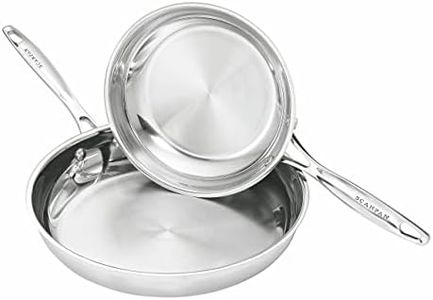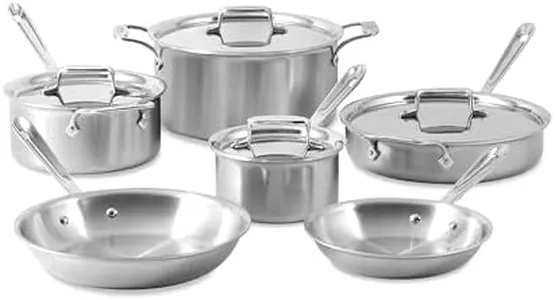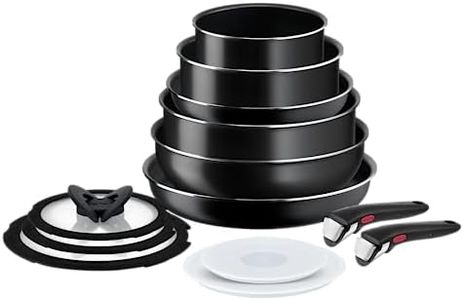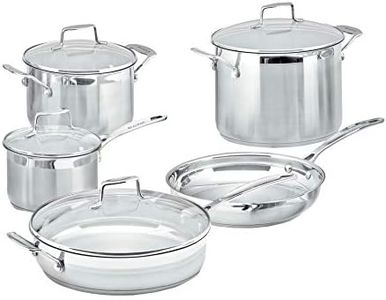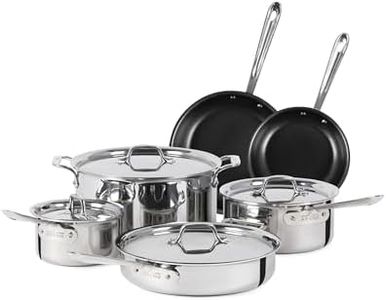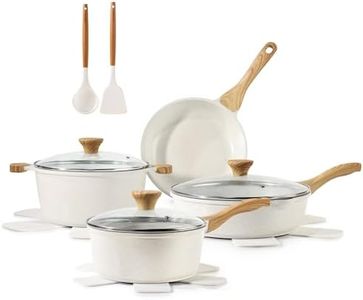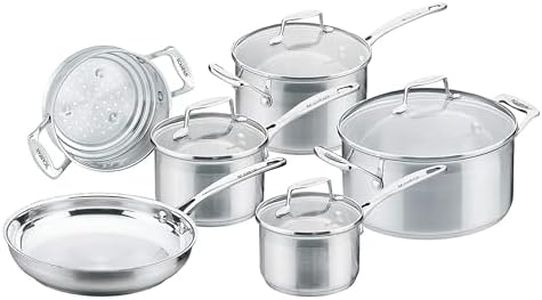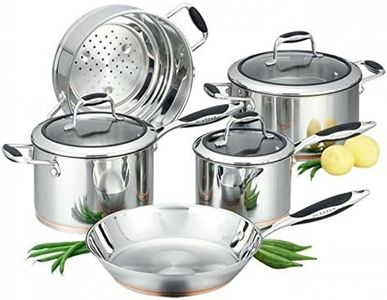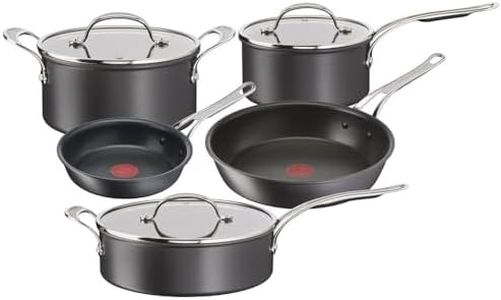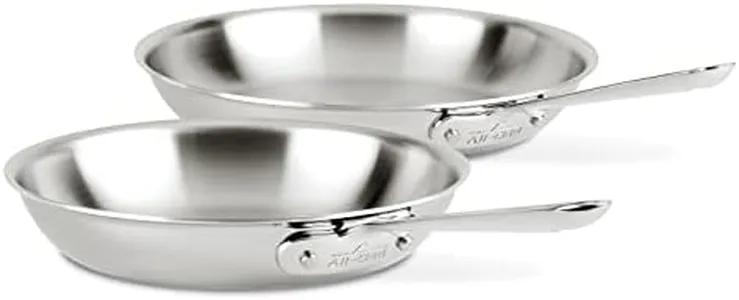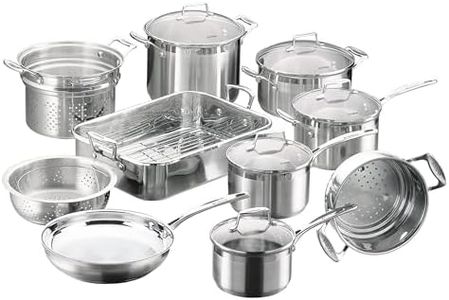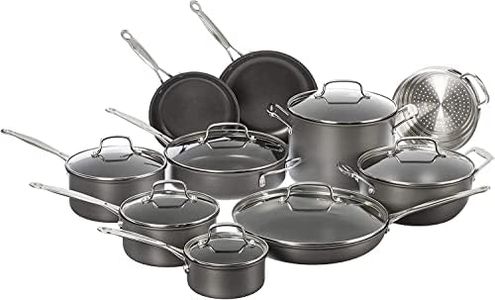We Use CookiesWe use cookies to enhance the security, performance,
functionality and for analytical and promotional activities. By continuing to browse this site you
are agreeing to our privacy policy
10 Best Pan Sets
From leading brands and best sellers available on the web.Buying Guide for the Best Pan Sets
Choosing a pan set is an important decision for anyone who enjoys cooking, whether you're a beginner or an experienced home chef. A good pan set can make your time in the kitchen easier, more enjoyable, and help you get better cooking results. It’s important to think about both what you like to cook and how you cook it before picking your set. Think about the types of meals you prepare most often, how many people you're usually cooking for, and your kitchen's storage and stovetop space. Each key feature of a pan set can have a big impact on performance and longevity, so understanding them will help you make a choice that fits your needs perfectly.MaterialThe material of the pans affects how evenly they heat, how durable they are, and how easy they are to clean. Common materials include stainless steel, non-stick (usually aluminum with a coating), cast iron, copper, and ceramic. Stainless steel is great for durability and browning but may require oil or butter to prevent sticking. Non-stick pans are easier to clean and great for delicate foods but can wear out faster. Cast iron retains heat well and can last decades, though it's heavier and needs some care. Copper is excellent for precise temperature control but often expensive and needs polishing. Ceramic is considered a safe non-stick alternative but can chip over time. Choose the material based on your cooking style—if you often cook eggs or pancakes, non-stick is convenient. For searing meats or versatile tasks, stainless steel or cast iron might be preferable.
Number and Type of PiecesPan sets come in different sizes, ranging from small starter sets (about 3-5 pieces) to comprehensive collections (10 pieces or more). Basic sets usually include a couple of frying pans and saucepans. Larger sets may add stockpots, sauté pans, and specialty items. Consider what types and how many pans you actually use; there’s no point in having pans that just collect dust. If your cooking focuses on simple meals, a smaller set may be enough. If you regularly cook varied meals or entertain guests, a larger set might make cooking more efficient.
Cooktop CompatibilityNot all pans work on every type of cooktop. Traditional pans work fine on gas and electric stoves, but induction cooktops require pans containing magnetic materials like certain stainless steels or cast iron. Some materials, like copper or aluminum, may need a special base to be induction-compatible. Always check the product details or look for compatibility symbols. If you have an induction stove or might upgrade in the future, make sure your set will work with it.
Oven SafetySome pans can go from stovetop to oven, which is useful for recipes that need both types of cooking. But not all pans, especially those with plastic handles or non-stick coatings, are safe at high oven temperatures. Manufacturers usually specify the maximum oven-safe temperature for each set. If you like to bake dishes like casseroles or finish steaks in the oven, look for sets with high oven-safe limits.
Ease of CleaningSome pan sets are dishwasher safe, while others require hand washing to maintain their surface or finish. Non-stick and many stainless steel sets are usually easy to clean, while uncoated cast iron or copper need special maintenance. If you want convenience, choose dishwasher-safe sets—just be aware that this may affect the lifespan of some coatings. If you enjoy caring for your cookware and don't mind extra cleaning, you might choose pans with special maintenance needs.
Weight and Handle DesignThe weight of the pans influences how comfortable they are to handle, especially when full of food. Heavier pans (like cast iron or copper) provide stability and better heat retention, but they can be hard to maneuver or lift for some people. Handle design matters too—look for handles that stay cool, provide good grip, and are securely attached. If you have limited strength or wrist concerns, lighter pans and ergonomic handles might be more important for you.
